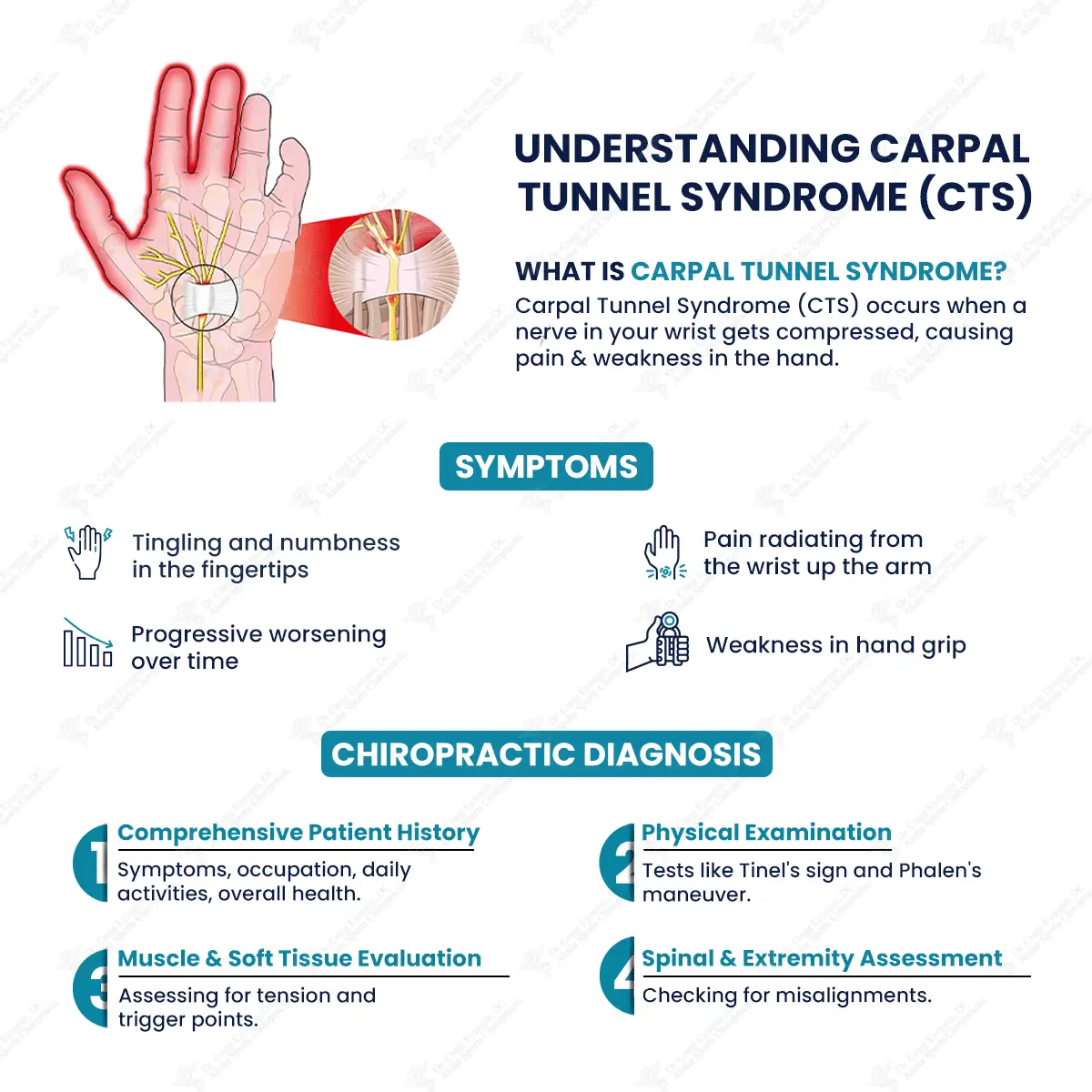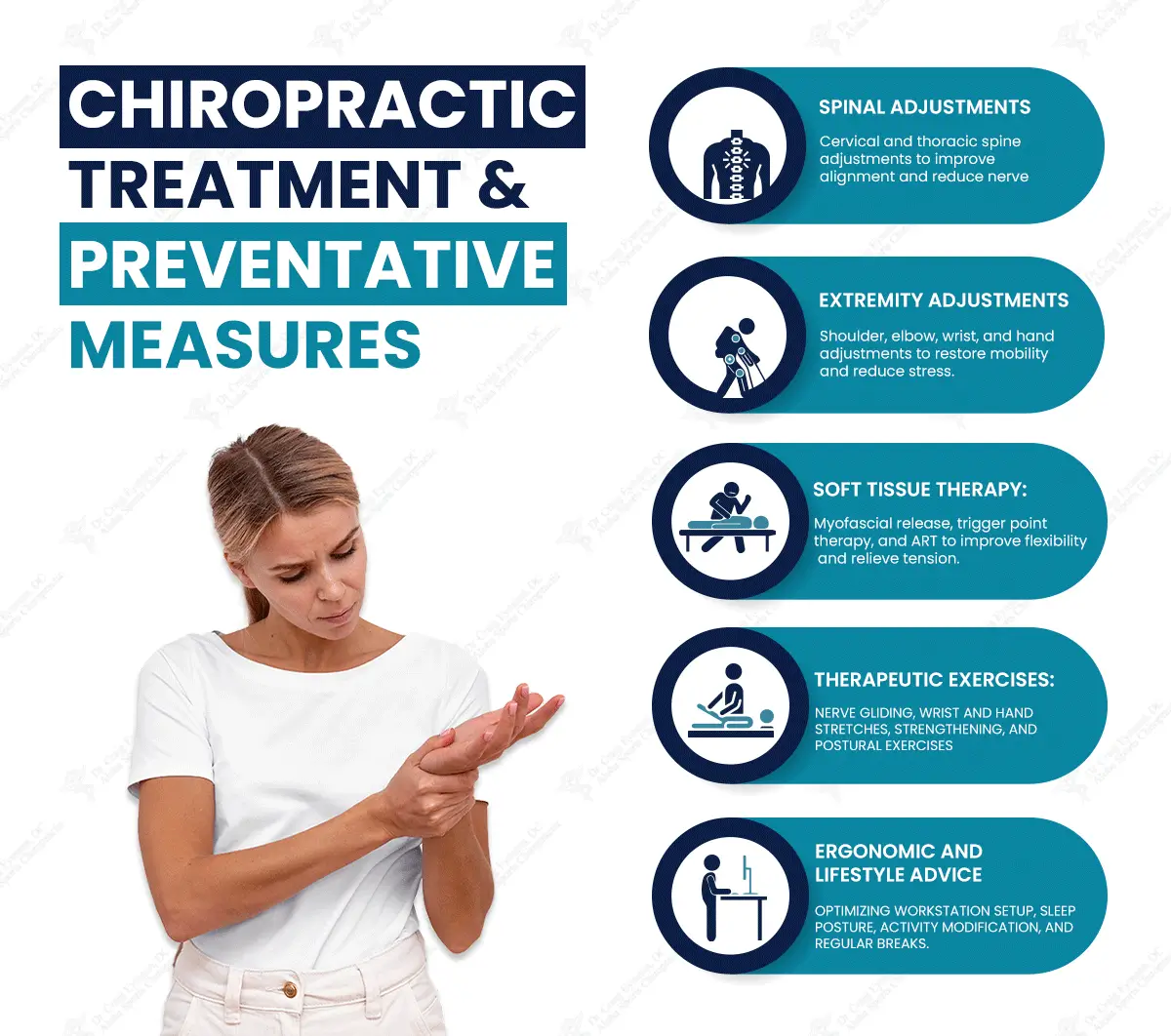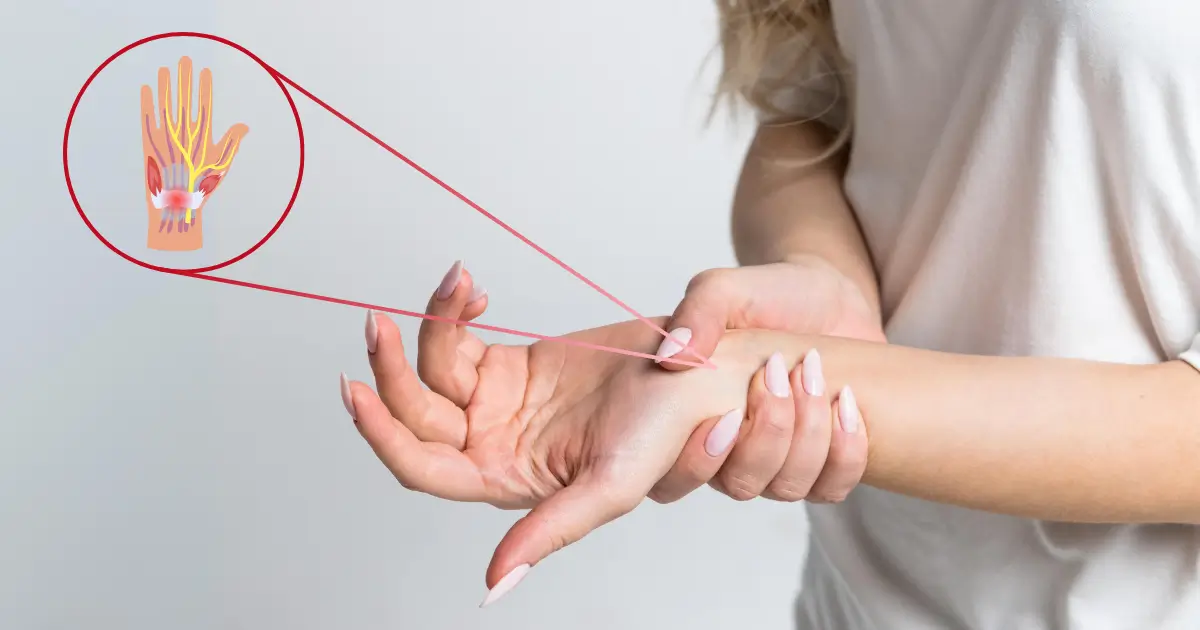
Are you tired of dealing with Carpal Tunnel Syndrome’s persistent discomfort, weakness, and burning? Do you find yourself struggling to perform simple daily tasks or worrying about your ability to continue working in your chosen profession? I got you!
As a chiropractor for Carpal Tunnel with over two decades of experience, I’ve seen countless patients struggling with Carpal Tunnel Syndrome (CTS). This common condition can be debilitating, affecting daily activities and work performance.
While many seek quick fixes for their symptoms, I’ve found that addressing the root causes of CTS is crucial for long-term relief and prevention.
In this post, I’ll share my insights on how chiropractic care offers a non-invasive, holistic approach to treating CTS by targeting its underlying factors.
However, recent studies have revealed a concerning presence of heavy metals in some chocolate products, casting a shadow over this cherished delicacy.
What is Carpal Tunnel Syndrome?
When patients come to me with CTS, I explain that it’s a condition in which the middle nerve, which travels from the forearm to the hand, becomes pressed at the wrist. This enlargement takes place in the transverse go down, a narrow passageway in the wrist.
As a chiropractor, I see CTS as more than just a local wrist problem—it’s often a sign of broader musculoskeletal imbalances that I can address through chiropractic care.

Symptoms I Look For
In my years of practice, I’ve learned to recognize the symptoms of carpal tunnel syndrome:
- A tingling and numbing sensation in the fingertips
- Pain that may spread from the wrist region up towards the arm
- Weakness in hand grip and dexterity
- Progressive worsening of symptoms over time
I always emphasize to my patients that early intervention is critical. The sooner we start chiropractic treatment, the better our chance of preventing long-term nerve damage.
Chiropractic Diagnosis of Carpal Tunnel Syndrome
When a patient comes to me with suspected CTS, my diagnostic approach includes:
- Comprehensive Patient History: I discuss their symptoms, occupation, daily activities, and overall health to identify potential contributing factors.
- Physical Examination: I perform specific tests, such as Tinel’s sign and Phalen’s maneuver, to assess nerve function and the reproduction of symptoms.
- Spinal and Extremity Assessment: I check for misalignments or restrictions in the spine, shoulder, elbow, and wrist that could be contributing to the problem.
- Muscle and Soft Tissue Evaluation: I assess the forearm and hand muscles for tension, trigger points, or adhesions.
This thorough evaluation allows me to create a tailored chiropractic treatment plan for each patient’s unique situation.
My Chiropractic Approach to Carpal Tunnel Syndrome
My treatment for CTS is multifaceted and addresses the entire kinetic chain from the neck to the hand:
1. Spinal Adjustments
Cervical Spine Adjustments
CTS impacts the center of the strength, which is derived from the cervical vertebral column. Any misalignments or restrictions in this area can irritate the nerve roots, leading to symptoms that manifest in the wrist and hand. I use gentle, precise adjustments to the cervical vertebrae to:- Restore proper alignment
- Improve range of motion
- Reduce pressure on cervical nerve roots
- Enhance overall nerve function
Thoracic Spine Adjustments
The spine of the thoracic region plays an important role in the chest alignment and arm biomechanics. Restrictions in this area can lead to compensatory patterns that affect the entire arm. My thoracic adjustments aim to:- Improve posture
- Enhance shoulder blade mechanics
- Reduce tension in the chest and anterior shoulder muscles
- Promote better nerve conduction through the brachial plexus
2. Extremity Adjustments
Shoulder Adjustments
A properly functioning shoulder is crucial for optimal arm mechanics. I assess and adjust the glenohumeral and acromioclavicular joints to:- Improve range of motion
- Reduce compensatory stress on the elbow and wrist
- Enhance overall arm function
Elbow Adjustments
The elbow joint, including the radioulnar joints, can influence wrist positioning and forearm muscle tension. My elbow adjustments focus on:- Restoring proper joint play
- Improving forearm rotation
- Reducing tension in the forearm flexor and extensor muscles
Wrist and Hand Adjustments
Direct adjustments to the wrist and hand are a vital component of my CTS treatment. I utilize precise methods for dealing with the following:- The radiocarpal joint
- Individual bones in the wrist
- Metacarpophalangeal joints
- Interphalangeal joints
- Increase space in the carpal tunnel
- Improve wrist mobility
- Relieve the strain on the side of the median nerve
- Improve total function of the hands
3. Soft Tissue Therapy
Myofascial Release
This technique includes applying persistent pressure to the fascia to remove limitations. I focus on:- The flexor retinaculum at the wrist
- Forearm flexor and extensor compartments
- Palmar fascia
- Improve tissue flexibility
- Reduce compression in the carpal tunnel
- Enhance circulation to the affected areas
Trigger Point Therapy
I identify and treat specific trigger points in muscles that can refer to pain in the wrist and hand. Common areas I address include:- The pronator teres
- Flexor carpi radialis
- Palmaris longus
- Scalene muscles in the neck
Active Release Technique (ART)
The innovative soft tissue approach blends accurate compression with patient-specific activities. I use ART to:- Break up adhesions in the forearm and hand muscles
- Improve muscle flexibility and strength
- Enhance nerve mobility through the carpal tunnel
Implant Guided Smooth Cell Mobilization
Using specifically specialized devices, I can efficiently address soft tissue constraints. This approach is useful for:- Increasing circulation to the areas of concern
- Promotes a quicker recovery of wounded tissues
4. Therapeutic Exercises
Nerve Gliding Exercises
These exercises gently mobilize the median nerve through its course from the neck to the hand. I teach patients specific sequences that:- Improve nerve mobility
- Reduce nerve adhesions
- Promote better nerve function
Wrist and Hand Stretches
I will show you a few stretches that work both the flexor and extension muscles of the wrist and forearm. These include:- Wrist flexor stretch
- Wrist extensor stretch
- Prayer stretch
- Finger stretches
Strengthening Exercises
To improve overall hand and wrist stability, I prescribe exercises such as:- Grip strengthening with stress balls or hand exercisers
- Wrist curls and reverse curls with lightweight
- Rubber band extension exercises
- Fingertip push-ups
Postural Exercises
Recognizing the importance of overall posture in CTS, I include exercises to improve upper body alignment, such as:- Shoulder blade squeezes
- Chin tucks
- Doorway chest stretches

5. Ergonomic and Lifestyle Advice
Workstation Ergonomics
I provide detailed guidance on optimizing work environments, including:- Appropriate backrest and elevated desk
- The keys and the mouse placement
- Use of ergonomic accessories (wrist rests, vertical mice, etc.)
- Correct monitor placement
Sleep Posture
I advise patients on optimal sleeping positions to avoid wrist flexion during the night, which may include:- Using a night splint
- Proper pillow placement
- Techniques to avoid sleeping with bent wrists
Activity Modification
I work with patients to identify and modify activities that may exacerbate their CTS symptoms, such as:- Proper techniques for lifting and carrying objects
- Alternatives to repetitive hand motions in hobbies or work tasks
- Use of tools or aids to reduce wrist strain
Breaks and Micro-exercises
I emphasize the importance of regular breaks during prolonged activities, teaching patients quick exercises they can do, like:- Wrist shakes
- Hand flexing and extending
- Brief stretching routines
Benefits of My Chiropractic Approach
I’ve seen numerous benefits for my CTS patients through chiropractic care:
- Non-Invasive Treatment: We frequently see substantial improvements without turning to operation or permanent pharmaceutical use.
- Addressing Root Causes: By correcting misalignments and imbalances throughout the upper body, we treat the underlying issues, not just the symptoms.
- Improved Overall Function: Patients frequently report better posture, increased range of motion, and improvements in other areas beyond their CTS symptoms.
- Empowerment through Education: I teach patients how to engage in their healing and prevent future complications actively.
Preventing Carpal Tunnel Syndrome: My Recommendations
Prevention is a vital part of my practice. Here’s what I advise my patients:
- Regular Chiropractic Check-Ups: This enables me to identify and handle minor concerns before they become significant difficulties.
- Ergonomic Awareness: I teach optimal work and daily activity posture to reduce stress on the wrists and hands.
- Stretching Routine: I demonstrate a series of stretches for the hands, wrists, and forearms that patients can do daily.
- Building Up Tasks: Building muscle in the fingers and forearms can assist withstand the stresses that cause CTS.
- Posture Improvement: I emphasize the importance of good posture, not just for the wrist, but for overall spinal and nervous system health.
The Bottom Line
In my years as a chiropractor, I’ve seen time and again how effective chiropractic care can be for Carpal Tunnel Syndrome. By addressing the entire musculoskeletal system – from the spine to the fingertips – we can not only relieve CTS symptoms but also improve overall health and function.
If you’re struggling with CTS, I encourage you to consider chiropractic care. In my experience, many patients find significant relief and avoid more invasive treatments through our holistic, hands-on approach. Recognise that the human body has a remarkable ability to recover if given the proper support and care. Don’t allow CTS to keep you down; make your initial step achieving a without discomfort, fully productive lifestyle today.

Meet Dr. Craig Eymann, a dedicated chiropractor and yoga enthusiast with over two decades of expertise in spinal health, sports chiropractic, and personalized care, prioritizing misalignment correction for swift injury resolution.




Leave A Comment